As the competition in the UEFA Champions League’s Group F thrives, it is more and more unclear which two clubs will go further in the knockout stage. In the fourth round of the group stage of the tournament, Borussia Dortmund welcomed Inter Milan in what was beforehand portrayed as the battle for the number two spot behind Barcelona, since the Catalans were on the top of the ladder in preparation for this game week.
The Italians approached this rather odd duel with a dedication to go home with all the three points, and were on a good path to do so after the first half. But the hosts didn’t surrender and they managed to overturn the situation into their favour and to gain revenge on their opponents, after losing to them in their last fixture, by winning it 3-2 at the Signal Iduna Park.
This tactical analysis will show you how the home team succeeded in beating their rivals, even though they were in a two-goal deficit at half-time and how their tactics brought them closer to the round of 16.
Lineups
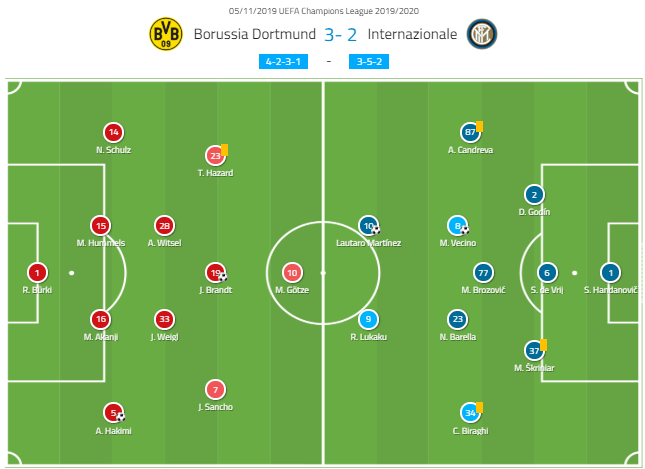
Lucien Favre set up his team in the 4-2-3-1 formation with a few modifications to the eleven he started in the first matchup of those teams. He went back to using their prefered formation and changed the back three that played in Italy into a back four, with Axel Witsel and Julian Weigl as the support for them in the midfield line. Mario Götze was back in the team and he was the key creative force of their side while playing as a false nine. Also, Julian Brandt was playing as a number ten in his favourite position and was way more dangerous then he was in the last clash with Inter.
Antonio Conte went into the game with his usual 3-5-2 tactics, with the expected players lined up. The only question he had before the match was how to fill the third midfield position, as Stefano Sensi wasn’t fit enough to start, so Matías Vecino took his place from the first minute. Marcelo Brozović and Nicolò Barella controlled the centre of the pitch next to him, and the main attacking threats, as always, came from their deadly duo embodied in Lautaro Martínez and Romelu Lukaku.
Inter’s first half
From the start of the game, the visitors showed that they were there to win which could be seen in their aggressive approach and style of play. They pushed their side very high up the pitch, going in with a clear high pressing in order to put the pressure on the opposition’s defensive line and to disable the fluent flow of the ball through their lines.
The away team’s midfielders oriented the press, with the strikers being the first defensive line of their side. Their main idea was to close down the passing lanes to Dortmund’s midfielders by locking them and staying very close to them, basically playing 3 v 3 and man-marking against their midfielders in the high zones of the pitch.
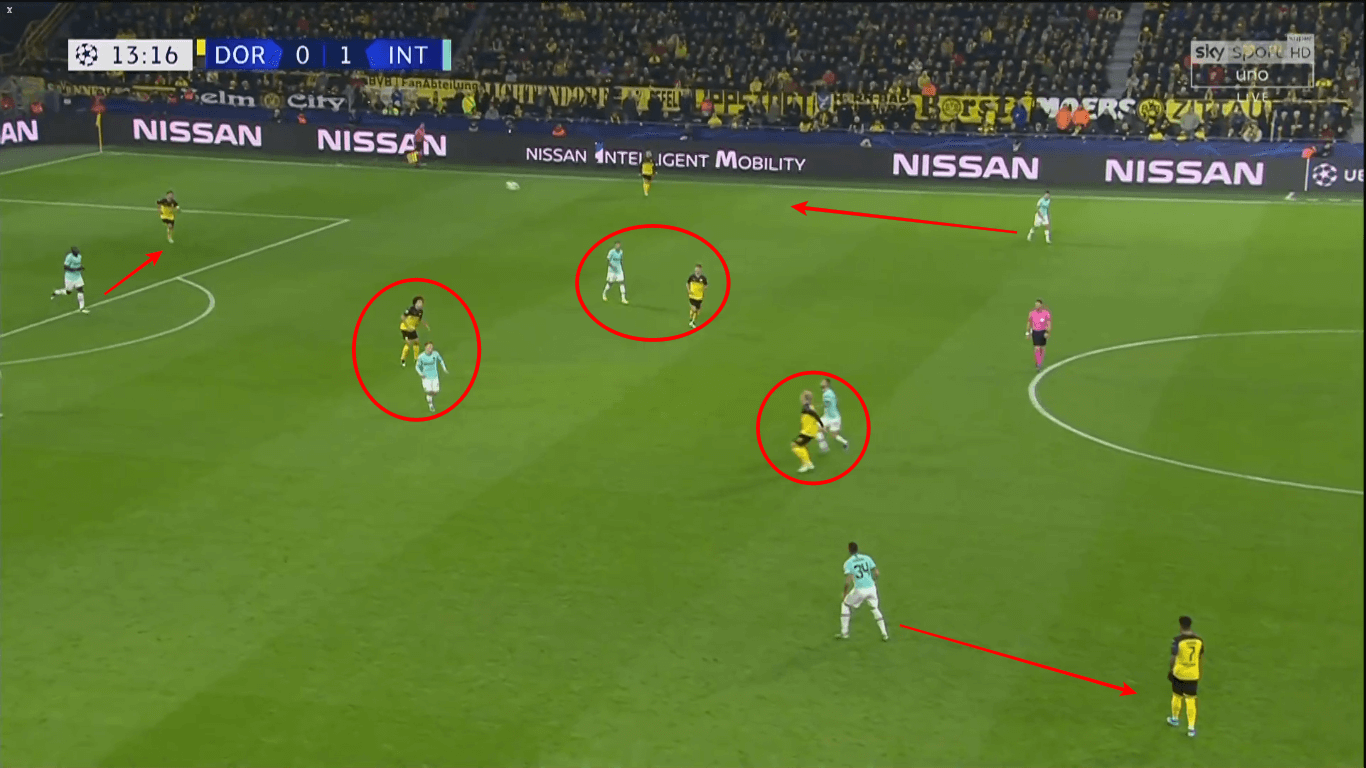
While Barella, Vecino, and Brozović were disabling Weigl, Witsel, and Brandt to get the ball so they could get their attack rolling, Inter’s midfielders had support from their wide players who were close to the action and were always ready to react if they were needed. The two strikers also often came to help which created a lot of surplus situations against the player with the ball for them in the pressured areas of the field.
Brozović had a huge impact for his team both in and out of possession. When his team got the ball, he was the key player in breaking the opponent’s press and playing it through their line’s passing, or even running in with the ball in his feet.
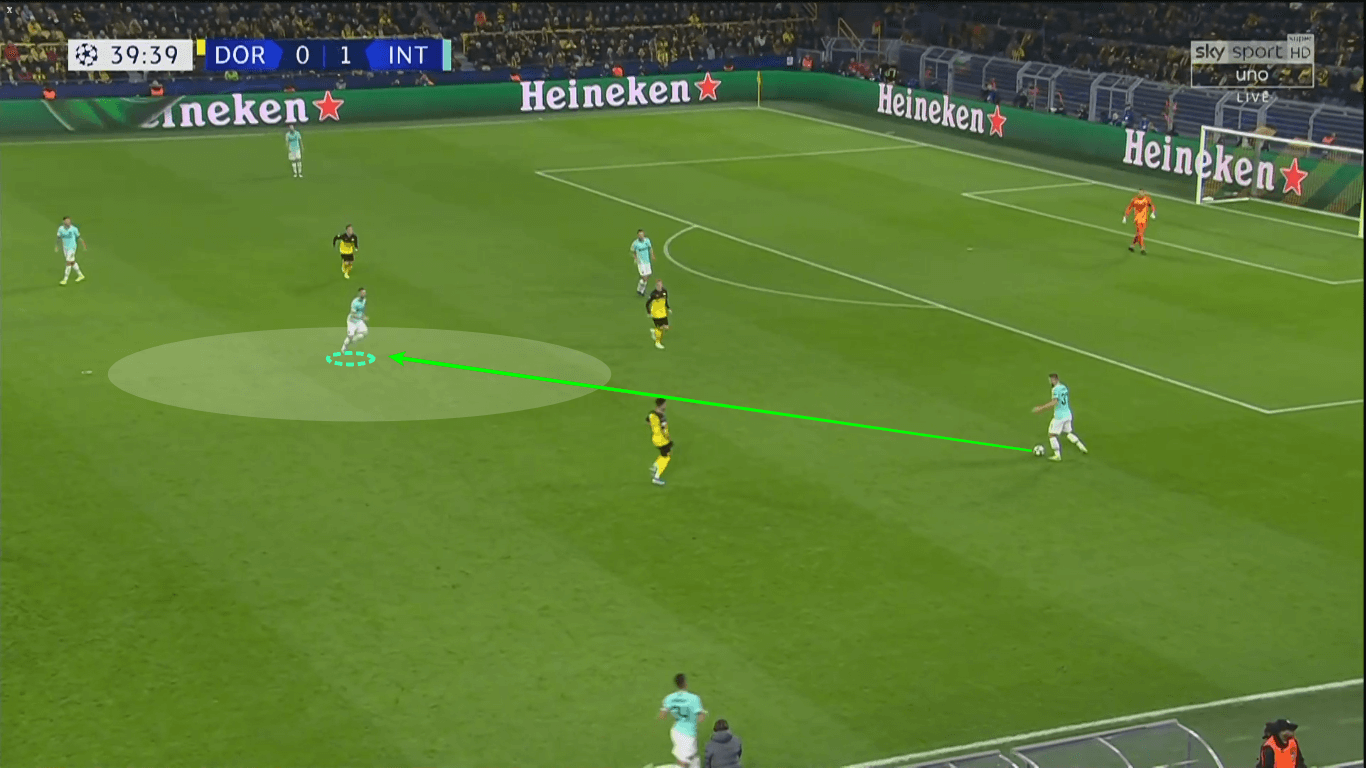
As we can see, his positioning was very good and time and again he sensed the free room in the opening stages of the build-up, which enabled his team to progress faster and to play it more directly. He was secure on the ball even when he was pressed and he did a very good job focusing the opponent’s attention to himself, which freed his teammates to get the balls unguarded.
The Croatian was also the key to their progressive transitive play since he often played the in-deep passes to Barella, Lautaro, and Lukaku who were positioned between the lines, or close to the opponent’s defenders when he attempted long balls.
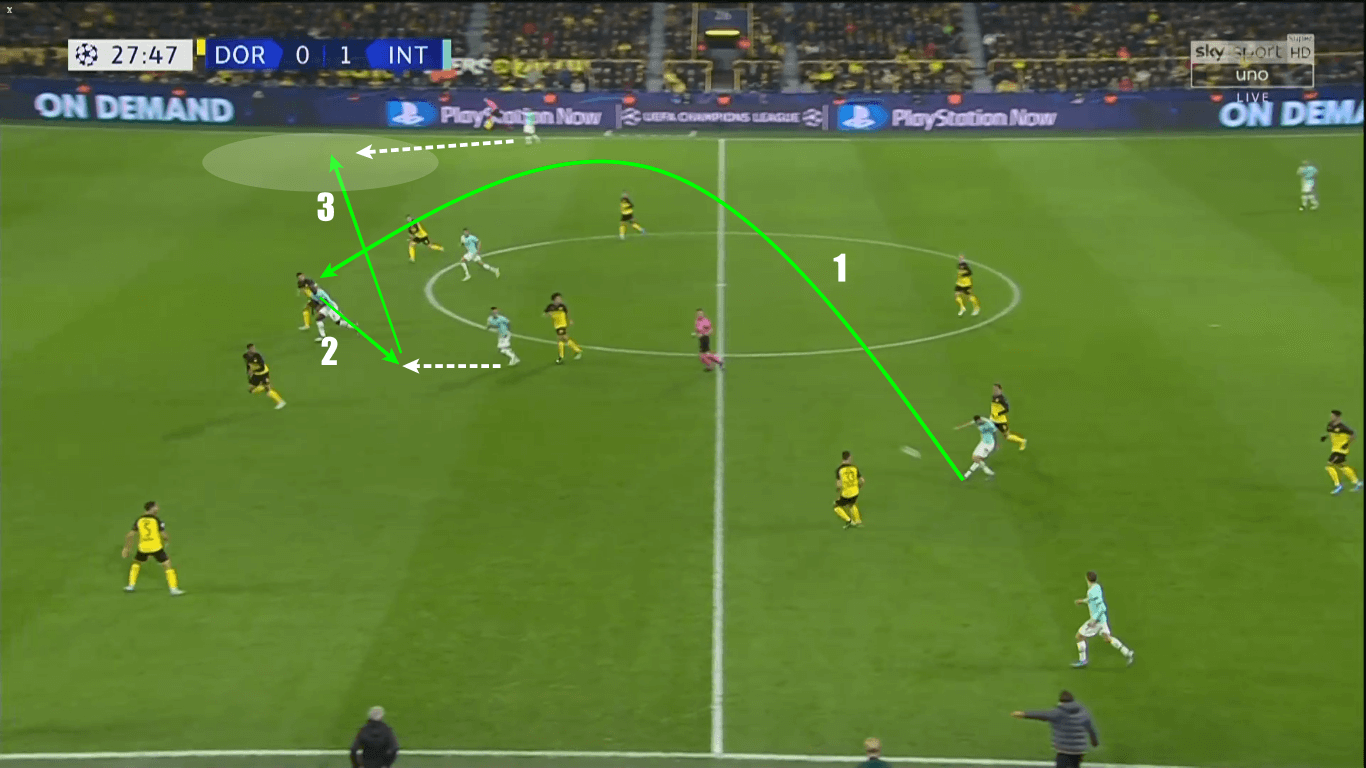
In the picture, it is shown how Inter performed their usual direct attacks that require a deep pass to one of the strikers, return-ball from one to the other and a fast side-switch ball to one of the flank-players. The midfielders were doing a great work providing their attackers with through-the-lines passes, while Martínez was always close to the action and ready to get the second balls or backwards passes which he converted into balls for the wide options, and made it possible for them to drive forward.
They showed some very good football but didn’t manage to maintain that same level throughout the whole 90 minutes, so they dropped the advantage they had even though they were the better team in the first half of the match.
Dortmund’s comeback and way out of the trouble
Favre’s men had struggled in the first 45 minutes since they couldn’t find a way through Inter’s well-organised defensive structure. Borussia’s attackers were having a tough time finding the empty spaces and getting the ball in the dangerous zones, so they needed to lower themselves in order to enable progress for their team.
That lead into Götze’s alienation out of his position as he was pushed very far away from the Inter goal and often searched for the ball on his own half. The space where he was planning to manoeuvre in was empty, and he was playing as a midfielder in a bigger part of the first half.
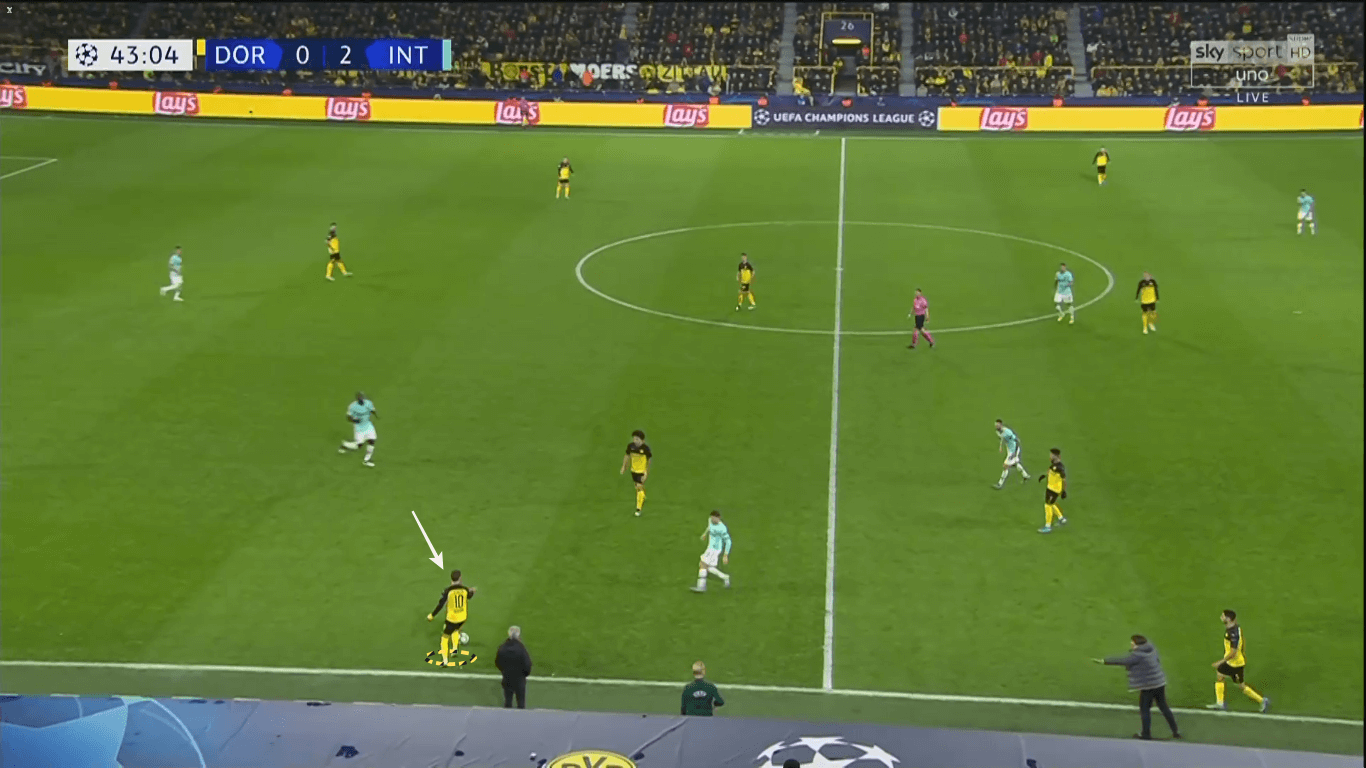
In the image above, we see the German lowered on his half of the pitch, which was planned by the Conte’s side. They forced him out of position as he was pointed as an in-between threat for their team since he’s usually very dangerous in finding the gaps in the defence. In spite of that, throughout the match, Borussia found the way to make Götze important and to provide him with more space between the lines as he often rotated with Brandt.
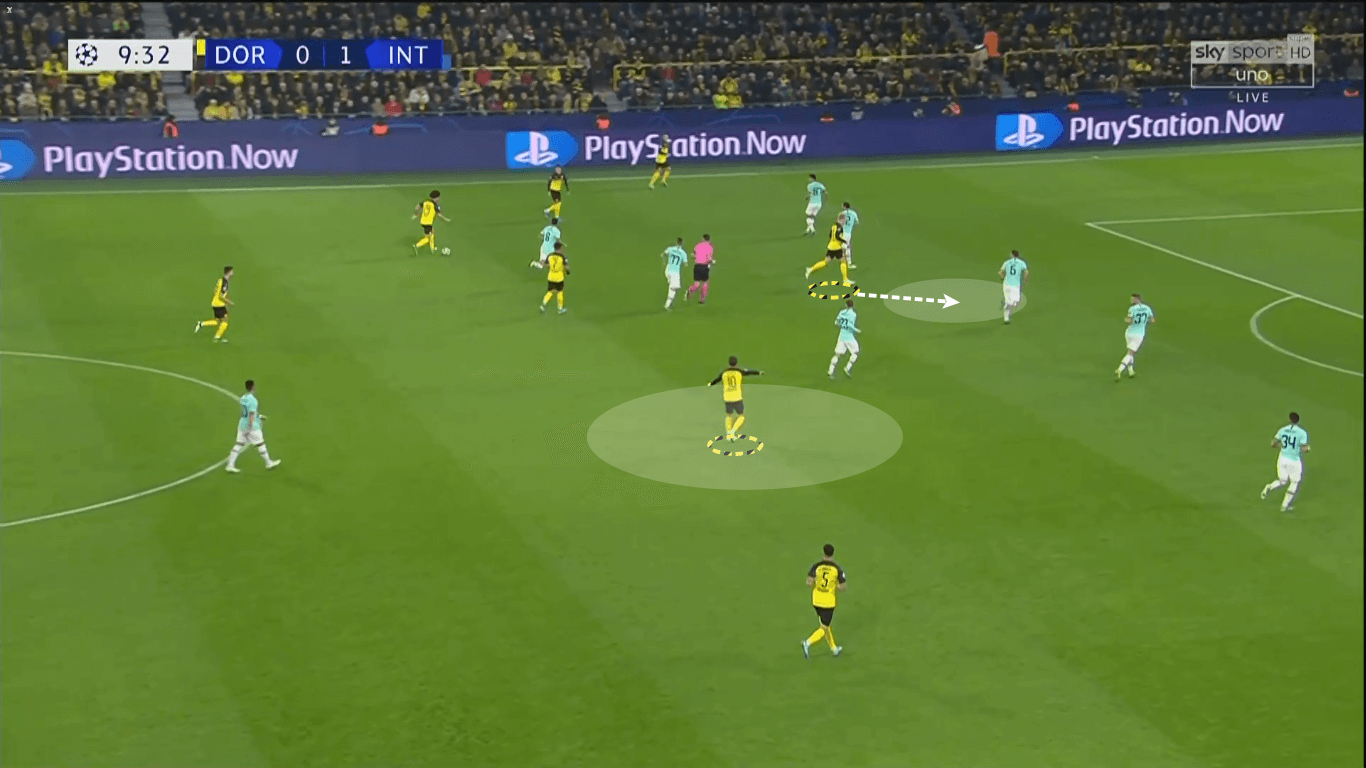
Two creative players often switched places in the final third, changing spots and emptying space for each other. When Götze dropped lower, Brandt would go higher and would play in his position, locking down the defenders’ attention to him and enabling his teammate to get the ball in a slightly shallower zone.
These motions made it possible for the hosts to exploit the areas that were the most vulnerable ones in Conte’s side’s block. The gaps between the wide players and central defenders were also noticeable in the first game between the two, and the home team decided to make use of them in the rematch. Brandt, who now played lower and with his face up to the goal, made a bigger impact on the match as he was a creative force, as much as he now was a run-in option for his team.
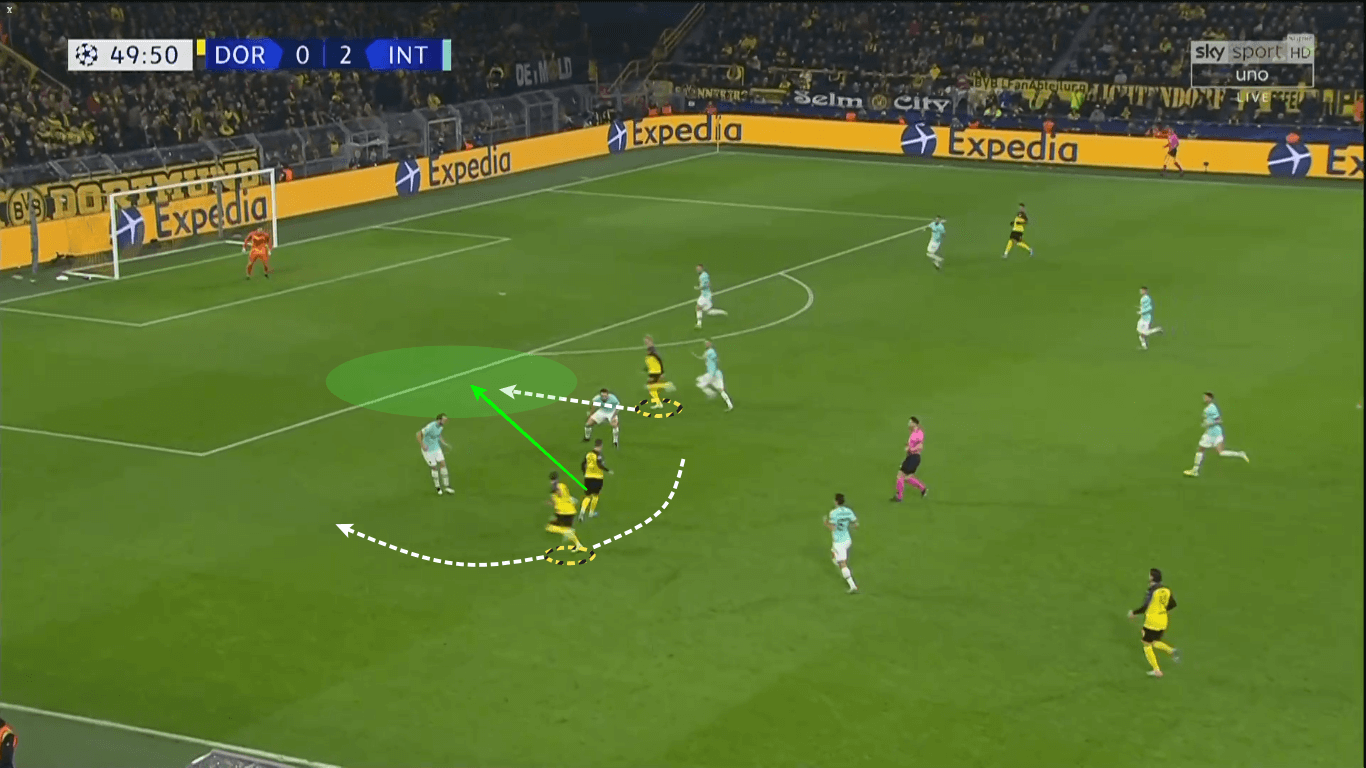
The rotations of the two central attackers for Borussia Dortmund confused Inter’s defenders and switched their focus from one to another, which resulted in gaps in the dangerous areas of the pitch which could be used by the opposition. If those passes didn’t work for Favre’s men and if they had lost the ball, they’d go hard with high pressing, trying to win the ball back as quickly as possible.
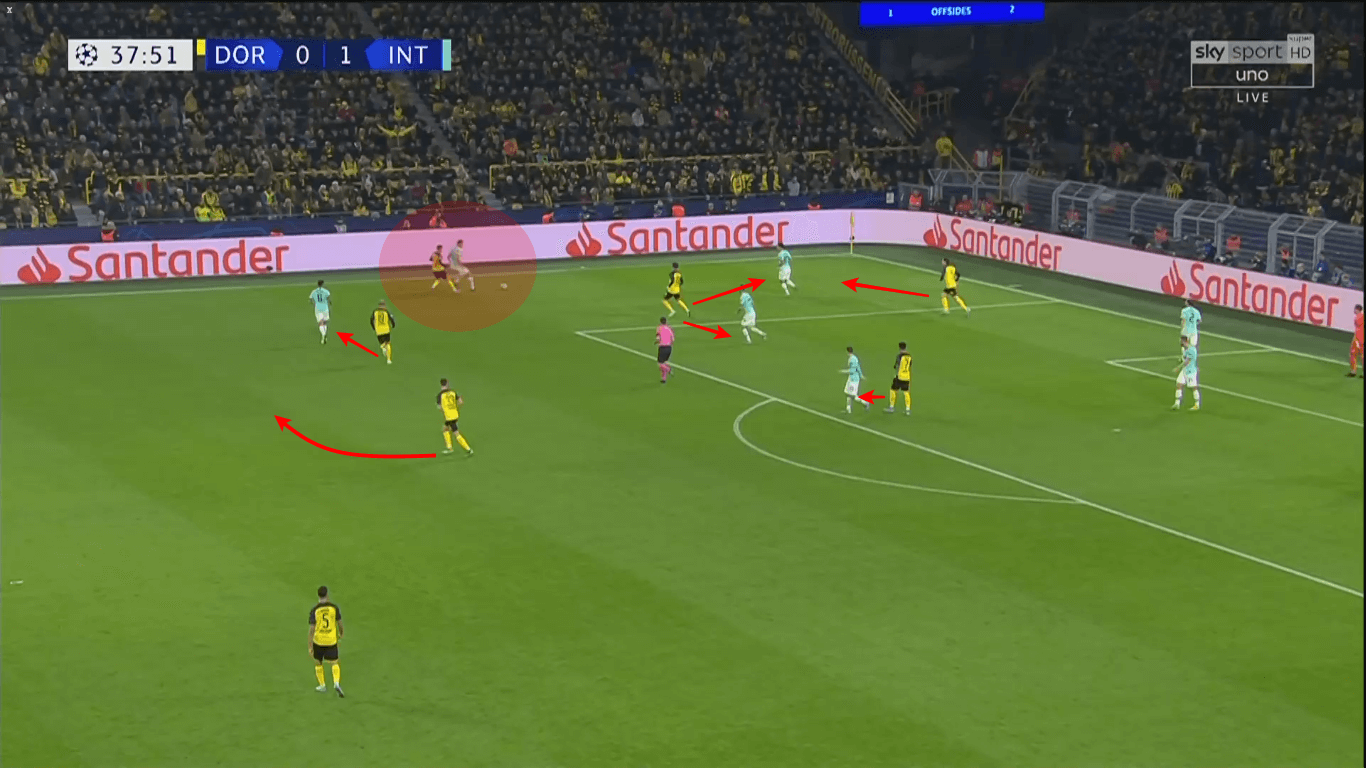
Their press has almost always been flank-oriented and they tried to man-mark the potential forward options which lead them into cutting a lot of passes in the final third and getting to their own chances out of those situations. As the game matured, they did this more and more frequently, ultimately resulting in a win for them.
Exploiting Inter’s flaws
As we pointed out before, the biggest issue in the visitors’ game was defending the inner-lanes between the wide players and the centre-backs, but along with that, they had some problems in defending the half-spaces where Dortmund’s skilled players had motioned. Throughout the game, the hosts came to their play and managed to beat the opponent’s press, which lead them to having possession on the opposition’s half of the pitch.
Their side tended to play it short in the restricted areas of the pitch so they could focus Inter’s attention to just one zone, and to make their action progress quickly by switching the side. They used overloads in order to create good situations for the creative players of their team on the other side – especially for Götze, Sancho, and Hakimi who masterfully used the opportunities to endanger Samir Handanović’s goal.
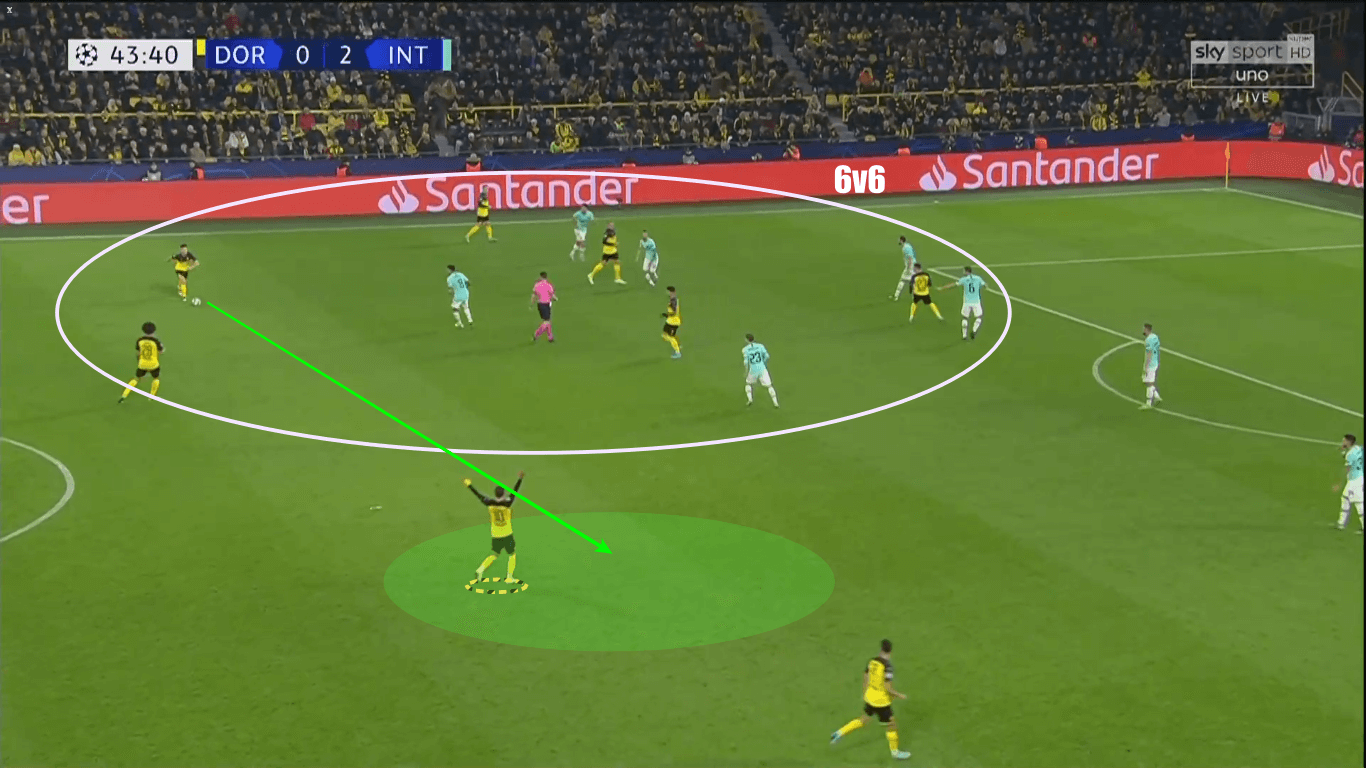
Here we see an example of how Borussia used a 6 v 6 overload on the left so they could get the players open on the other part of the field to whom they could pass. Their number ten did a great job lowering in those areas and getting the ball faced up towards the goal, from where he supplied his teammates with good passes.
Winning the “gap battle” was of huge importance for the result of the match, as Dortmund clearly profited after they found the way to exploit the areas that were pointed out earlier in the analysis. The Sancho-Hakimi connection was the key to making it lucrative for Favre’s side since the two of them broke through those zones, both with their sense for space and with their pace.
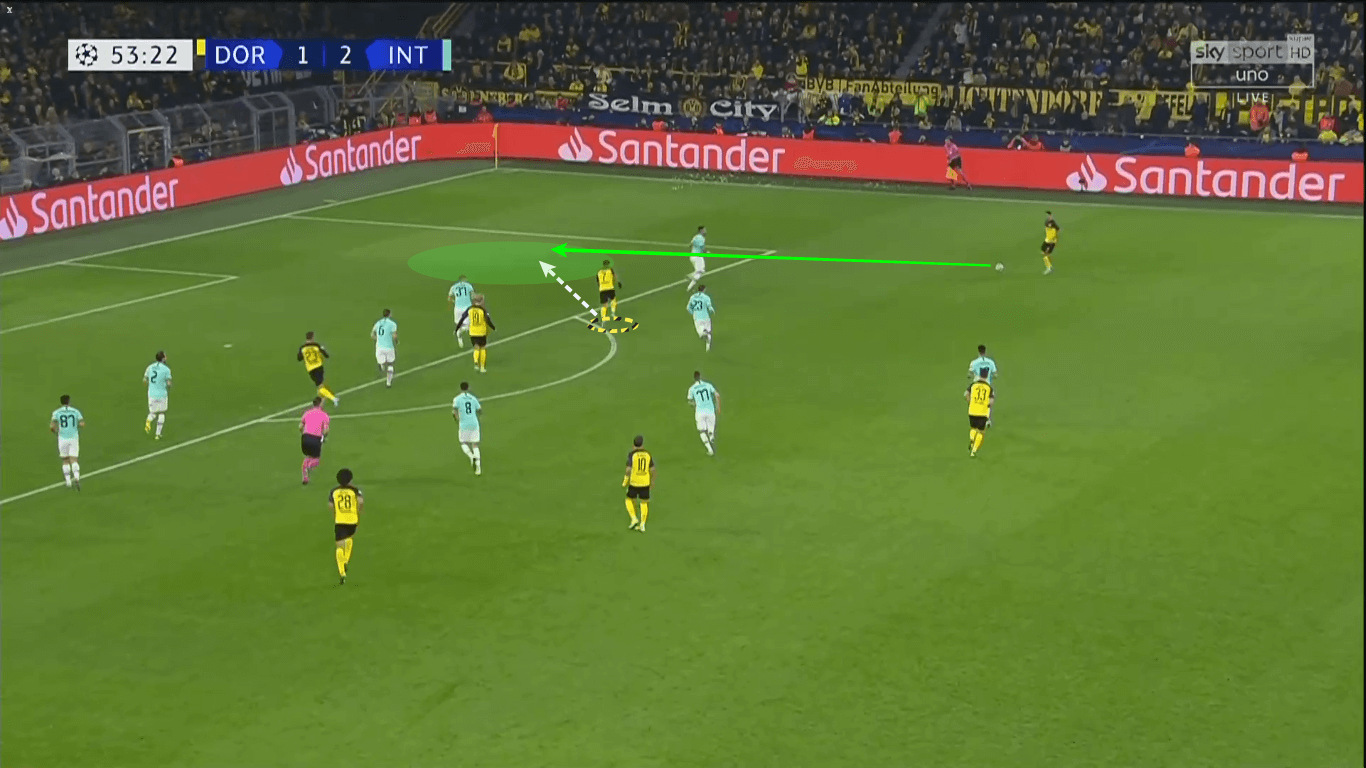
The Englishman positioned himself very well in the inner-corridor, asking for the ball in the gaps and also attempting the runs into the free spaces between the wing-backs and central defenders. Those areas were the worst-protected ones by Conte’s team and Borussia had a lot of opportunities when they brought the ball into these positions.
Fast-forward direct play was often taking the stand through the right-handed side, as Hakimi was one of the main goal-threats with his long runs from the third line of the attack. His speed caused a lot of problems for the not-as-fast Milan Škriniar, and it enabled him to come in with more than a few goal-scoring opportunities, finally resulting in his two goals.
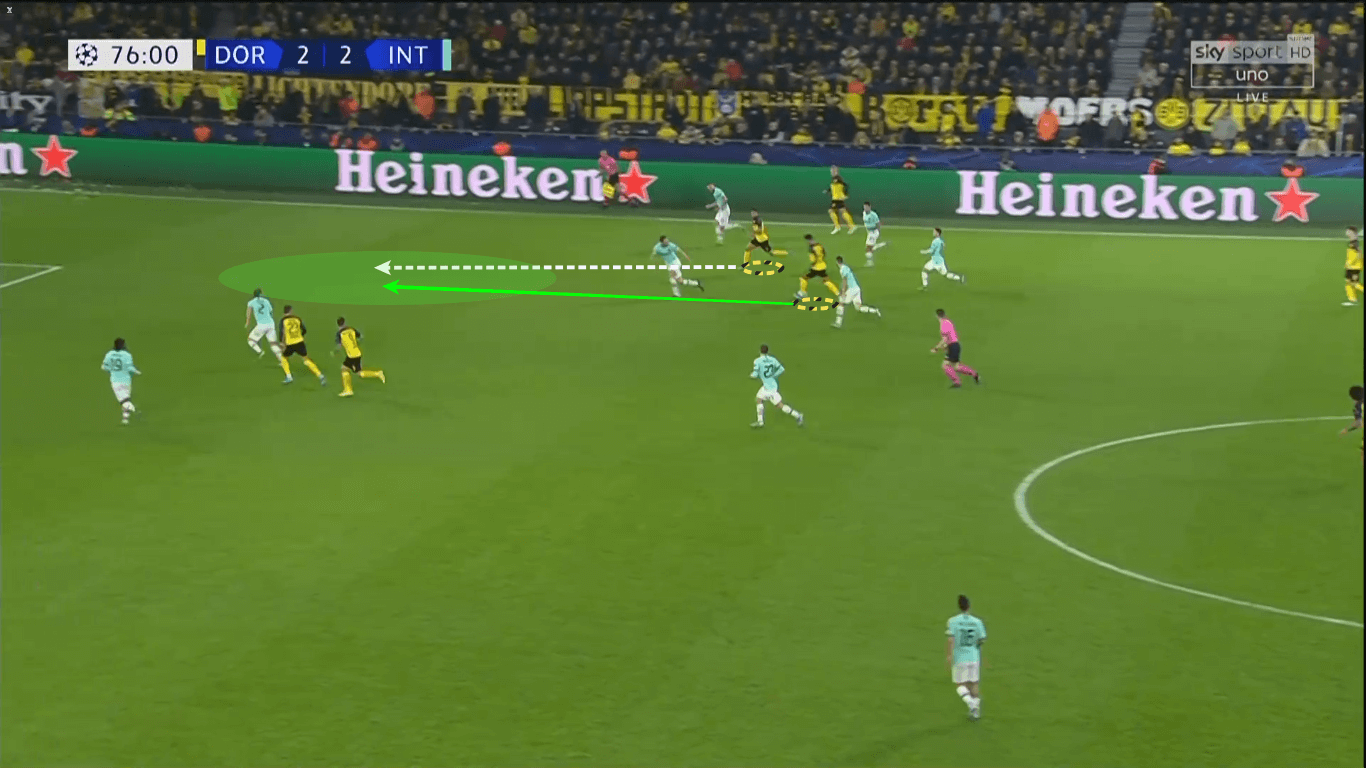
As we can see in the picture, Sancho was an important part of the right flank actions since he diverted the opposition’s defenders’ attention to him and supplied Hakimi with deep balls. The Morrocan overlapped his runs down the right-hand side and filled the vulnerable areas of Inter’s half of the pitch, which again and again brought his side into good opportunities to score, after his good cooperation with the winger.
Conclusion
Borussia Dortmund will surely make a big leap in terms of character and courage with this comeback, especially since it wasn’t expected for them to win it after being two goals behind. They have shown that they could play versus the pressure and that they could learn from their mistakes as they have beaten Inter Milan by exploiting the issues they noticed their opponents had in the first match between the two of them.
Conte’s side dropped a huge three points and will have a very difficult job to go through into the knockout phase of the Champions League. Even though they played pretty well in some parts of the duel, they couldn’t maintain the level which lead them into bursting into the match with the lead, and instead went home with zero points in their pocket.
The upcoming two game weeks in this group will definitely be quite interesting because all of the contenders for the top 16 round are playing at a similar level, and are providing close-quality performances.
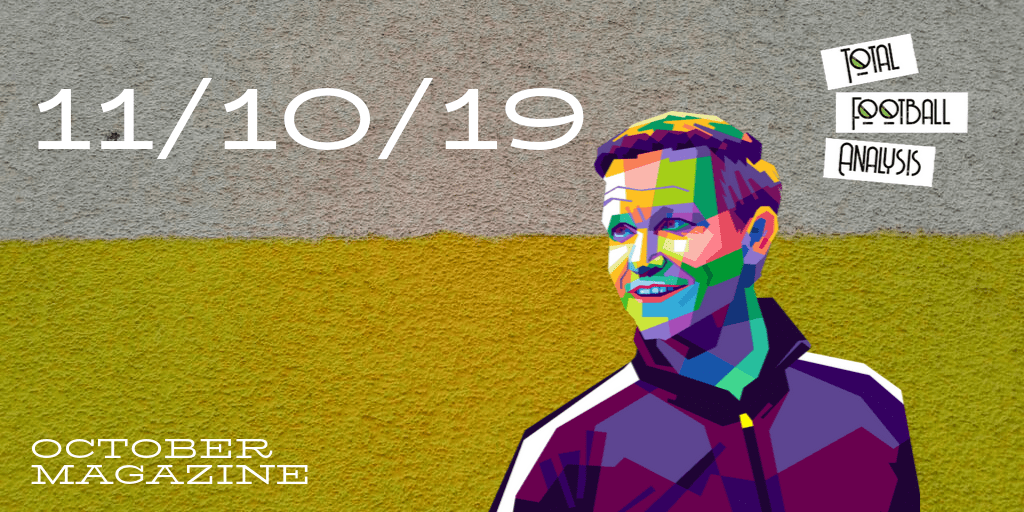
If you love tactical analysis, then you’ll love the digital magazines from totalfootballanalysis.com – a guaranteed 100+ pages of pure tactical analysis covering topics from the Premier League, Serie A, La Liga, Bundesliga and many, many more. Buy your copy of the October issue for just ₤4.99 here





Comments